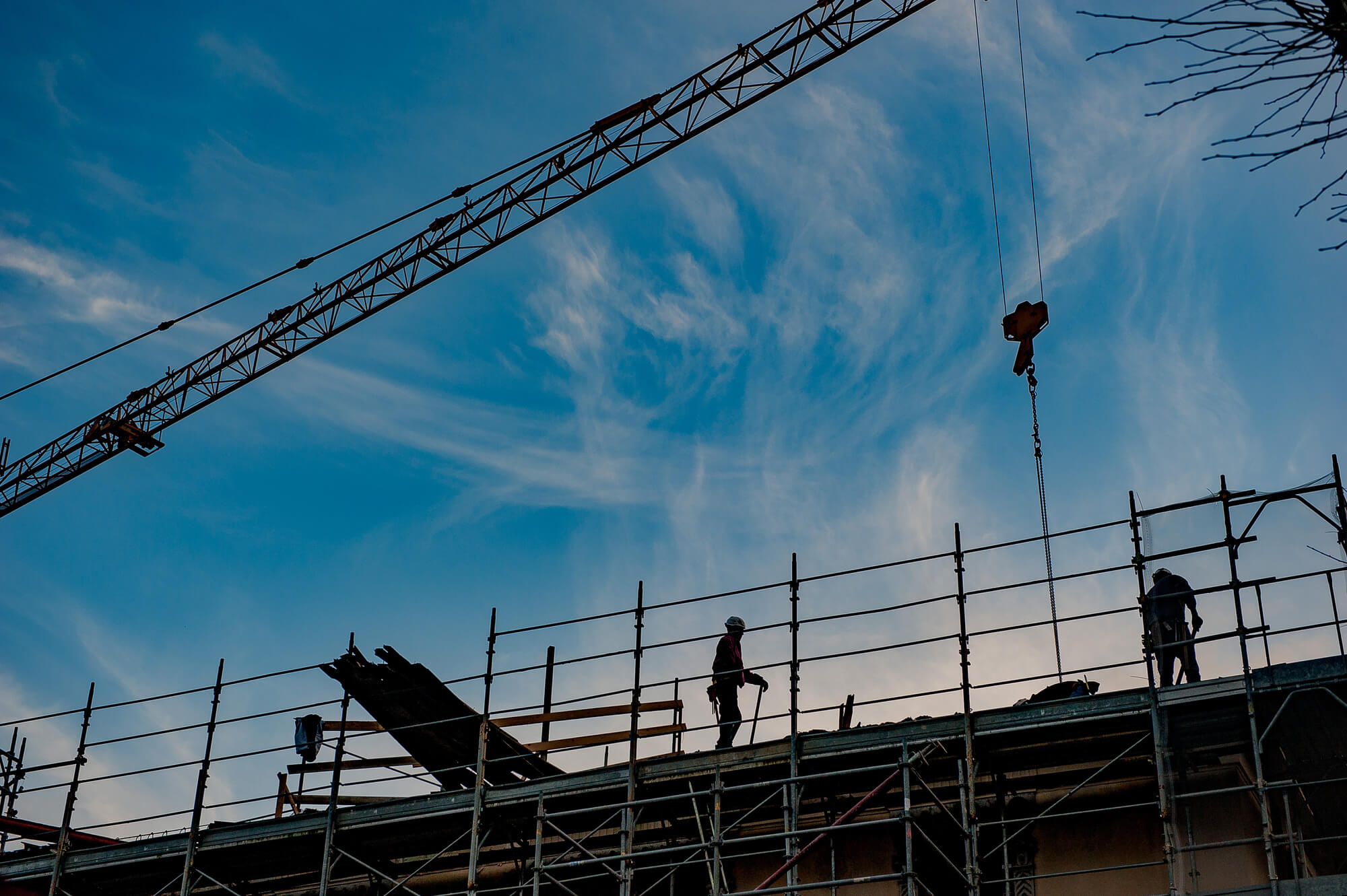The guest on the “Reconstruction” podcast is Oleksandr Solontai, an expert in local development and the head of the NGO “Agency for Recovery and Development.” We discussed how the war has affected communities and decentralization, the conflict between regions and the center, as well as the prospects for reintegrating the occupied territories.
On the future of the decentralization reform during martial law
The first phase of the full-scale invasion demonstrated that one of the reasons why the aggression stalled across the vast areas in the North, East, and South of Ukraine was decentralization. Each community became a combat unit, and local self-governance became one of the factors contributing to the resilience of the frontline.
This highlights the need to preserve local self-government and strengthen communities. Therefore, despite the necessity of the reverse process (centralization of power) and the limitations imposed by martial law (such as the inability to amend the Constitution), decentralization must continue. And this is already happening.
The key points of the podcast were compiled by Maksym Yovenko, a Reform Index project assistant.
The new Law on Service in Local Self-Government Bodies was adopted after February 24, and in March 2024, the Cabinet of Ministers approved the Decentralization Roadmap. It is also worth mentioning the Law on Local People’s Governance (awaiting the President’s signature since May 17, 2024).
On tools for public engagement
In 2024 alone, the Verkhovna Rada passed two laws aimed at increasing the transparency and openness of local self-government and broader public engagement.
The martial law has halted presidential, parliamentary, and local elections. The electoral process traditionally mobilized civil society actors and citizens, partially compensating for the lack of proper participation mechanisms. Therefore, Parliament was compelled to vote on laws that had been “on the table” for quite some time. Perhaps this way, we can save local democracy and involve people a bit more in the work at the local level.
On the shortage of personnel and limited capacity
Today, the issue of personnel shortages is extremely pressing. There is a significant number of open vacancies in local government bodies. This is a result of migration, mobilization, changes in the rules for deferments, and the financing of local budgets. The latter particularly affects employees: with budget deficits and people in need, communities are unable to raise salaries for staff in village, town, and city councils.
There is another side to the story. Before the war, local communities were active participants in addressing pressing societal issues, as was the case during the COVID-19 pandemic. However, today, this capacity has suffered. This affects reconstruction, European integration, and the strategic development of their territories. During the war, the ability to respond to these challenges has diminished for all participants in local governance: community leaders and deputies, civil society activists, entrepreneurs, and local residents.
On horizontal connections within communities
Local communities have various associations where they have successfully established connections. One example is the Association of Ukrainian Cities, which includes over 1,000 members and unites all major cities and nearly all towns, villages, and settlements. This is a vast association with over 30 years of experience. There are also other associations, smaller in scale but still important for networking. This phenomenon is so widespread that there is even a special Law on Associations of Local Self-Government.
International projects, particularly within the framework of technical assistance, also contribute to this, with NGOs acting as contractors and implementers. As a result, these associations have become full-fledged actors in the field of local governance. This helps communities communicate with each other, share experiences, and even compete for resources.
So, we have definitely not returned to the past when “whatever the governor said, everyone did.” Unfortunately, attempts have been made in many regions to reintroduce such methods of governance, which is concerning. Therefore, I would like to once again thank the European Union for giving us the green light to join. This creates the necessary connections to save local democracy, self-governance, and, overall, the idea of decentralization.
On military administrations and the restoration of top-down governance
Martial law is rapidly reestablishing the vertical link between central authorities and local governance.
It is worth noting that regional state administrations have been replaced by regional military administrations in all regions. These bodies didn’t just change their names from “state” to “military”; they have become more assertive, seeking to restore centralized influence. The situation with city administrations is more nuanced. In some places, they have been entirely dissolved, while in others, there is resistance to this process, leading to conflicts.
For example, the situation in Kherson and Chernihiv is quite different. In Kherson, a city military administration was established, becoming part of the vertical structure, with the regional military administration above it and the President’s Office at the top.
However, in Chernihiv, there was a conflict between the regional military administration and the city. The region attempted to introduce a city military administration to replace the civilian one, but Parliament refused to support this decision.
As a result, local self-government was preserved, but the city military administration still formally exists. Although it holds no actual powers, it hinders the functioning of civilian governance. This has added another layer of struggle for local self-governance beyond dealing with the destruction of infrastructure—the fight against the imposition of decisions by the central government.
We did not reach this situation without reason. The decentralization reform was only partially implemented, and the vertical structure remained in place. Although it had been weakening and moving toward dissolution since 2014, martial law reversed this trend, reviving a top-down approach to governance.
Thus, we have reached a conflict where Kyiv accuses local authorities of abuse of power, corruption, and being “too popular” among local residents. Meanwhile, local officials remind us that such rhetoric contradicts the reform already in place for a decade. If it weren’t for the European Union, we might have become completely “stuck.” However, decentralization and the development of local self-governance are essential components for Ukraine to become a truly European country, where local social and economic development is managed at the grassroots level.
On strengthening the ideology of decentralization during the war
Despite the strengthening of vertical power structures, the war brings challenges that underscore the need for decentralization. For instance, the recent attacks by Russia have caused energy production shortages, requiring the implementation of various, sometimes extraordinary, methods of decentralizing energy supply.
In practice, this means that village, town, and city councils, as well as NGOs and businesses, often become players in this area. This includes small projects like solar power stations and heat pumps in clinics, libraries, or shared spaces of apartment building co-owners associations (OSBB). There are also larger-scale projects in municipal enterprises, water utilities, and sewage systems.
Communities are taking these matters into their own hands, which strengthens the ideology of decentralization. It demonstrates that decentralization is effective, beneficial, and the best way to respond to crisis situations.
On the reintegration of occupied communities
The restoration and reintegration of occupied communities are directly linked to the scale of devastation and suffering caused by the war. The examples of the Kherson and Kyiv regions show that if, after liberation, 40%, 30%, or even 20% of capital structures remain, the community will undoubtedly revive.
However, we have far more tragic examples, such as Robotyne and Bakhmut. These are ruins surrounded by minefields. It’s important to emphasize that, first and foremost, communities are about people. Even if they are currently internally displaced, they remain co-owners of this shared space despite it being in ruins, mined fields, and gardens. In their hearts, they carry the sentiment of home, childhood, and their native land.
Therefore, everything will depend on the will of these people. In some cases, faced with total destruction, people may choose not to contribute to rebuilding their small homeland. In such instances, the only thing we can do is approach their decision with respect and understanding.
However, I believe that in some places, people will still come together. Even if it’s in dugouts, trailers, living wagons, or among ruins, they will start working. Alongside the military, emergency services, and deminers, they will begin rebuilding the first house, then the second, and the third. If their hearts are in it and they refuse to accept their fate, no “mined” signs will stop their determination to restore their home.
Фото: depositphotos.com
Attention
The author doesn`t work for, consult to, own shares in or receive funding from any company or organization that would benefit from this article, and have no relevant affiliations



